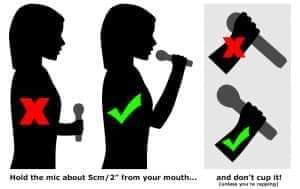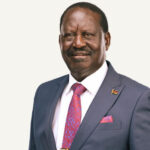You’ve poured your heart into rehearsals and aced the performances without microphones, but the moment you step onto the stage with one in hand, things seem to go awry.
Many singers have faced this predicament, but fear not; the key lies in mastering the art of microphone technique.
As a singer, understanding and effectively using microphones can significantly enhance your stage presence and elevate your vocal expression.
The Power of Knowing Your Microphone:
Microphones are the singer’s ally, enabling amplification and connecting your voice with your audience. To wield this tool effectively, it’s crucial to grasp the different types of microphones available. The two primary types used for stage performances and recordings are unidirectional and omnidirectional microphones.
Unidirectional microphones receive sound input from one direction, while omnidirectional ones can capture sound from all directions. To determine the type you have, try speaking or singing into the mic from various angles.
Guides for Using Microphones Effectively:
- Learn to Hold the Mic Correctly:
Avoid holding the mic by its head, as this is a common cause of that dreaded feedback. Many singers unknowingly blame sound engineers for the noise, but the issue often arises from improper handling. Holding the mic by its shaft reduces the risk of feedback and ensures a more professional and clear sound.
- Sing into the Center of the Mic:
For unidirectional microphones, singing directly into the center of the mic enhances clarity and audibility. If there are multiple singers on stage, it’s advisable to have individual microphones for each, as backups often use unidirectional mics and those at the sides may go unheard. Remember, a clear and strong vocal delivery can captivate your audience like nothing else.
- Master the Right Proximity:
The distance between your mouth and the microphone affects your sound quality. Getting too close to the mic may produce a muddy sound, emphasizing lower frequencies. To achieve clarity and articulation, position the mic a bit forward. The optimal distance may vary depending on the type of microphone you are using.
Additionally, be mindful of adjusting the microphone’s position when singing louder passages. Moving it slightly forward prevents distortion and helps maintain a comfortable listening experience for your audience.
Embrace Growth and Improvement:
As with any skill, mastering microphone technique requires practice, patience, and a willingness to learn and improve. Consider seeking feedback from experienced singers or sound engineers to refine your technique. Attend workshops or take vocal lessons to enhance your microphone skills further.
Understanding and effectively utilizing microphones are essential for any singer seeking to deliver impactful performances. Embrace the unique capabilities of different microphones and practice proper handling and positioning.
By mastering the art of microphone technique, you’ll elevate your stage presence, connect with your audience on a deeper level, and ensure that your voice shines brightly, leaving a lasting impression in the hearts of your listeners.
So, let your voice soar, and may your journey as a singer be filled with harmonious melodies and captivating performances.














